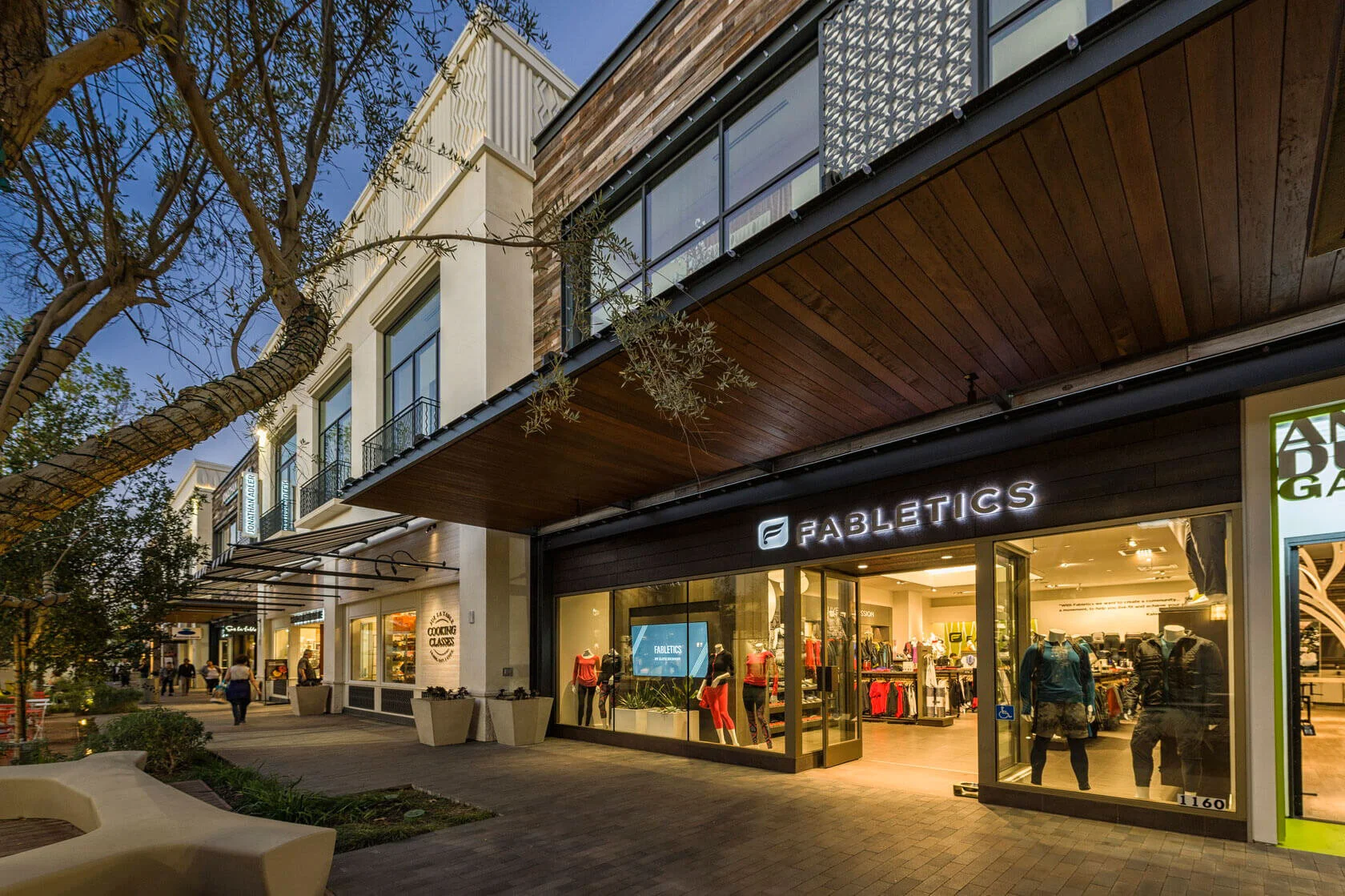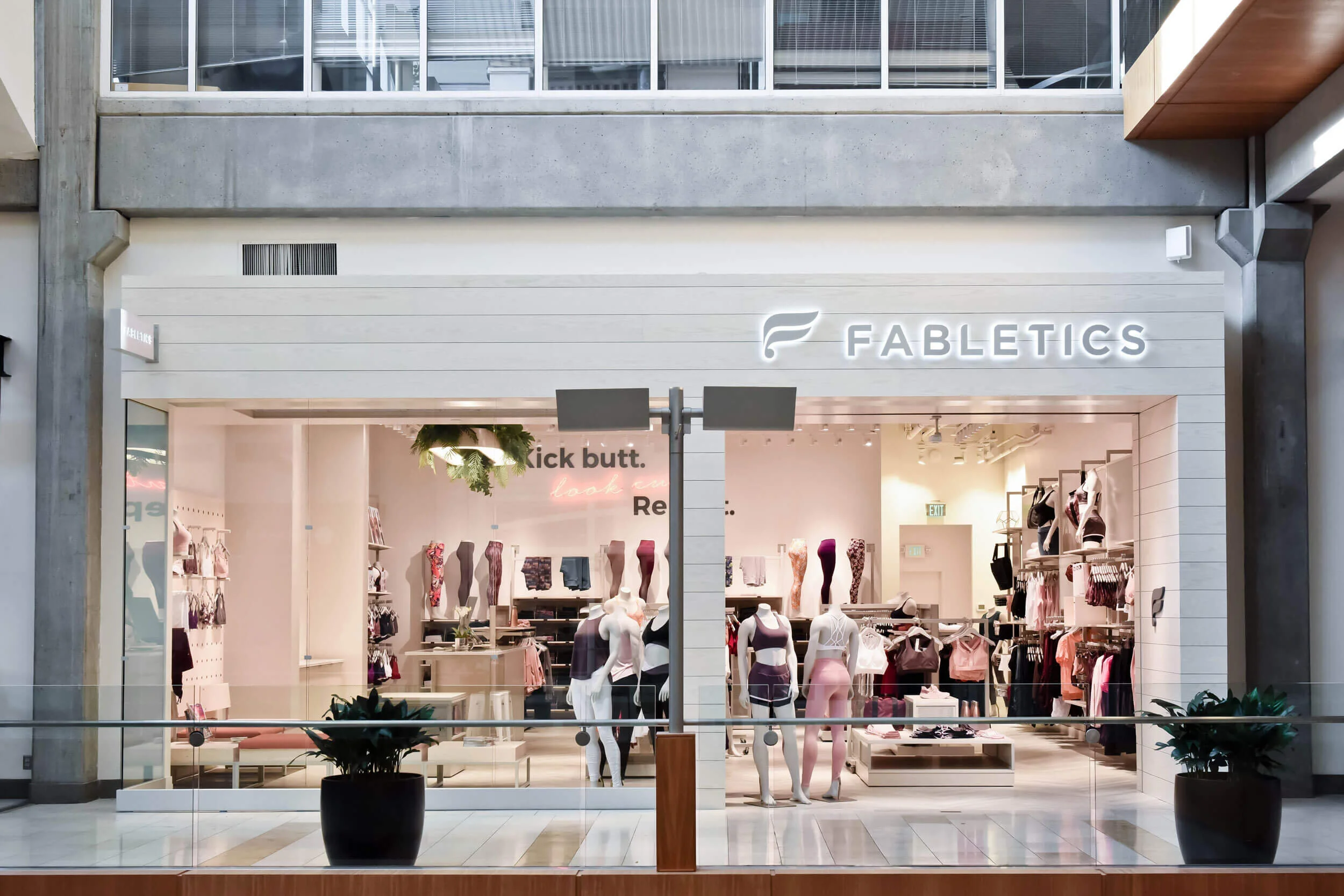Fabletics | Retail Store Prototype Design
transforming an online brand into brick-and-mortar
Fabletics was born on the internet as an ‘active-lifestyle’ apparel company. In 2015 they started to develop physical stores as a way to complement their online sales. The design of their stores has evolved over several iterations. The graphic quality of the prototype has given way to a subtle elegance as the brand has matured. It has settled into a confident mentality about what their physical presence is and how it complements their online presence.
Location | Various
Size | 1,700 SF - 2,200+ SF
Type | Retail Stores
Case Study | From Online to Brick-and-Mortar
We are experiencing the second generation of online retail and its impact on store design. The first generation created shopping habits ensuring people could trust buying over the internet. The impact on global shopping trends was seismic. Now that this trust has been established, and online brands have created their followers, brands are looking to re-occupy physical space. Before this retail shift, stores and the brand were identical, but today stores are extensions of a website.
Fabletics was born on the internet. They generate over a billion dollars in retail sales in the growing ‘active-lifestyle’ category. To continue to compete in their sector, it was clear that Fabletics needed physical stores. However, in our digital society, stores have shifted from the only point of sale to behaving as a showroom and fitting rooms. The stores functionally augment their online presence.
Extending a brand from the internet into realty is about inserting identity into space. What makes Fabletics different in the ‘active-lifestyle’ category is that it doesn’t engage in visual clichés such as equating athletic wear with rough wood or rusted metals. Instead, Fabletics carves new territory by linking athletic wear with high fashion. Fabletics’ stores shift the argument away from thinking about active-lifestyle as ‘urban’ to something more ‘urbane’. It’s in this shift that the store found its physical brand identity.
Fabletics Store in Woodland Hills, CA
At Fabletics the clothes dominate the landscape. The stores are small, often 1,500 to 2,000 square-feet, so the vibrant colors combined with a large SKU count have a powerful visual effect. A random vibrancy is created by the clothes in the store and any design for the store needs to account for this. Working with this condition led to a refined and muted palette that allows the clothes to step forward. The design of the stores reflects the dynamic that occurs between the space and the product. This dynamic creates a mutually beneficial scenario where the clothes and the store complement each other.
Fabletics is a living brand and the design of their stores has evolved over several iterations. The graphic quality of the first iterations has given way to a subtle elegance as the brand has matured. It has settled into a confident mentality about what their physical presence is and how it complements their online presence.
Fabletics Store at Mall of America, Bloomington, MN
Fabletics Store in Plano, TX
Fabletics Store in Bellevue, WA
Fitting rooms are no longer a necessity in the digital era because the shopper can have the item sent to their home. However, the fitting room is an option that the shopper may choose. This shift from ‘only’ to ‘choice’ is critical because fitting rooms must now become places of decision making. The shopper is choosing to be there so the brand must extend into this space to meet them. At Fabletics, the fitting rooms continue the urbane theme of the store. This space contrasts the vibrancy of the sales area. Its relaxed character allows the shopper to quietly make decisions without needless distractions. Again, the clothes are foregrounded and the physical space defers to the clothing.













